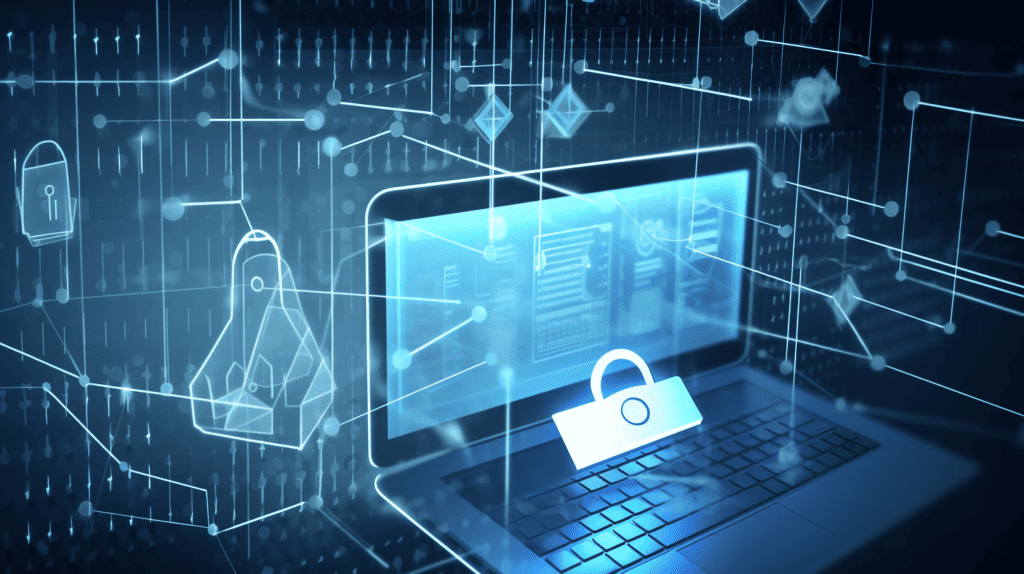Introduction
In today’s rapidly evolving digital landscape, cybersecurity has become increasingly vital for organizations of all sizes. The constant threat of cyberattacks has highlighted the critical need for robust security measures. One such measure is two-factor authentication (2FA), which adds an additional layer of protection to user accounts and systems. This comprehensive guide aims to shed light on the implementation of 2FA and its significance in safeguarding organizational assets.
What is Two-Factor Authentication?

Definition and basic principles
Two-factor authentication, also known as multi-factor authentication, is a security process that requires users to provide two separate forms of identification before accessing a system or account. This method offers enhanced protection by combining something the user knows (e.g., a password) with something they have (e.g., a physical token) or something they are (e.g., a fingerprint).
Differentiating 2FA from other security measures
While traditional authentication methods rely solely on passwords, 2FA strengthens the security framework by introducing an additional layer of verification. It significantly reduces the risk of unauthorized access, as it becomes exponentially more challenging for cybercriminals to overcome multiple authentication factors.
Benefits of Implementing Two-Factor Authentication

Enhancing identity verification
By implementing 2FA, organizations can substantially improve the accuracy and reliability of identity verification. Passwords alone are susceptible to being compromised or forgotten, but combining them with other authentication factors ensures a higher level of confidence in confirming the user’s identity.
Heightened protection against common threats
Two-factor authentication provides an effective defense against common cyber threats such as phishing attacks, brute force attacks, and credential stuffing. Even if an attacker manages to obtain a user’s password, they would still need access to the second authentication factor, significantly reducing the likelihood of a successful breach.
Types of Two-Factor Authentication

There are three primary categories of factors used in 2FA:
Knowledge-based factors: passwords, PINs, and security questions
Knowledge-based factors involve something that the user knows, such as a password, a personal identification number (PIN), or answers to security questions. While these factors are commonly used, they can be vulnerable to attacks such as password cracking or social engineering.
Possession-based factors: physical tokens, smart cards, and mobile devices
Possession-based factors rely on something that the user possesses, such as physical tokens, smart cards, or mobile devices. These factors are more secure than knowledge-based factors, as they require the physical presence of a specific item.
Inherence-based factors: biometrics and behavioral characteristics
Inherence-based factors utilize unique physiological or behavioral characteristics of the user. Examples include fingerprints, retinal scans, voice recognition, and behavioral biometrics like typing patterns. These factors provide a high level of security as they are difficult to replicate or forge.
Creating an Effective Two-Factor Authentication Strategy

To implement an effective 2FA strategy, organizations should follow these steps:
Assessing organizational needs and potential risks
Start by assessing the specific needs and potential risks faced by the organization. Identify critical systems and sensitive data that require the strongest protection. By understanding these factors, organizations can tailor their 2FA approach to suit their unique requirements.
Identifying suitable factors and combinations
Evaluate the various authentication factors and combinations that align with the organization’s needs. Consider factors such as usability, reliability, and scalability. It’s essential to strike a balance between security and user experience, ensuring that the chosen factors are both effective and user-friendly.
Establishing policies and guidelines
Establish clear policies and guidelines for implementing and managing 2FA within the organization. These should include procedures for user enrollment, maintenance, and revocation of authentication factors. Regularly review and update these policies to adapt to changing security landscapes.
Implementing Two-Factor Authentication

Implementing 2FA requires a systematic approach that encompasses several stages:
Step 1: Evaluating available technologies and solutions
Thoroughly evaluate the available technologies and solutions for implementing 2FA. Consider factors such as compatibility with existing systems, scalability, and ease of integration. Responsible implementation involves choosing solutions that meet the organization’s specific requirements and align with industry best practices.
Step 2: Determining deployment methods
Identify the most suitable deployment methods for 2FA implementation. This may include integrating with existing authentication systems or utilizing third-party service providers. It’s important to consider scalability, cost-effectiveness, and ease of management when determining the appropriate deployment methods.
Step 3: Conducting pilot tests and simulations
Before fully deploying 2FA across the organization, conduct pilot tests and simulations to ensure the chosen solution works smoothly and efficiently. This phase allows for the identification and resolution of any potential issues, ensuring a smoother transition for all users.
Step 4: Establishing a phased implementation plan
Develop a phased implementation plan to gradually roll out 2FA across the organization. This approach minimizes disruption and allows for proper training and support to be provided to all users. By breaking the implementation into manageable stages, organizations can ensure a successful and seamless transition.
Overcoming Challenges in Implementing Two-Factor Authentication

Implementing 2FA may present certain challenges, which can be addressed through proactive measures:
User resistance and change management
Resistance to change is a common challenge when introducing new security measures. Overcoming this requires effective change management strategies, including education, awareness campaigns, and clear communication of the benefits and necessity of 2FA.
Training and educational initiatives
Organizations should provide comprehensive training and educational initiatives to users, ensuring they understand how to enroll in and use the chosen authentication factors effectively. This includes educating users on best practices and potential risks associated with 2FA.
Troubleshooting common technical issues
Technical issues may arise during 2FA implementation. Organizations should establish a robust support framework to troubleshoot and resolve any technical challenges users may encounter. Offering timely assistance and guidance can minimize frustration and promote user adoption.
Best Practices for Two-Factor Authentication

To maximize the effectiveness of 2FA, organizations should adhere to these best practices:
Regularly updating and improving security measures
The security landscape is ever-evolving, and organizations need to stay ahead of emerging threats. Regularly update and enhance the security measures in place, including the authentication factors used for 2FA. This ensures that the organization maintains a strong defense against new and emerging risks.
Enforcing password complexity and expiration policies
While passwords are just one factor in 2FA, they should not be neglected. Enforce password complexity guidelines, such as incorporating a mix of uppercase and lowercase letters, numbers, and special characters. Set password expiration policies to ensure regular updates and prevent the use of compromised passwords.
Monitoring system logs and user activities
Implement monitoring mechanisms to keep track of system logs and user activities. This allows for the early detection of suspicious behavior or unauthorized access attempts. Proactive monitoring enables swift response and remediation in case of security incidents.
Balancing Security and User Experience

Finding the right balance between security and user experience is crucial for successful 2FA adoption within an organization. Consider the following guidelines:
Ensuring convenience without compromising security
Implement authentication factors that are convenient and user-friendly without compromising security. Strive for a seamless user experience that encourages adoption and minimizes user resistance. Explore technologies that streamline the authentication process, such as push notifications or biometric recognition.
Offering user-friendly authentication methods
Select authentication methods that cater to a diverse user base and consider accessibility needs. Offering a range of options, such as SMS codes, email verification, or biometrics, ensures that users can choose the most suitable method that aligns with their preferences and devices.
Industry Standards and Compliance

2FA is often mandated by industry-specific regulations and frameworks to safeguard sensitive data and comply with security standards. Some common regulations that require or recommend 2FA include:
- Payment Card Industry Data Security Standard (PCI DSS)
- Health Insurance Portability and Accountability Act (HIPAA)
- General Data Protection Regulation (GDPR)
- National Institute of Standards and Technology (NIST) guidelines
Organizations should familiarize themselves with the relevant regulatory requirements and industry-specific guidelines to ensure compliance and minimize the risk of penalties or breaches.
Evaluating the Effectiveness of Two-Factor Authentication

Measuring the effectiveness of 2FA implementation is vital for continuous improvement. Evaluation can be done through the following methods:
Analyzing incident reports and security metrics
Regularly review incident reports and security metrics to measure the impact of 2FA on reducing unauthorized access attempts and successful breaches. In-depth analysis highlights potential areas for improvement and aids in decision-making for future security enhancements.
Conducting user satisfaction surveys and feedback
Gather feedback from users through surveys or feedback mechanisms to assess their satisfaction with the implemented 2FA solution. This aids in identifying areas where user experience can be improved and ensures that the chosen authentication factors are effective and user-friendly.
Case Studies: Successful Implementation of Two-Factor Authentication

Examining real-world examples of successful 2FA implementation offers valuable insights and inspiration. Here are two case studies illustrating diverse use cases:
Company A: From vulnerabilities to fortified security
Company A, an e-commerce giant, witnessed several security breaches resulting from compromised passwords. After implementing 2FA using a combination of password and biometric authentication, they successfully eliminated unauthorized access attempts and significantly reduced their vulnerability to cyber threats.
Company B: Streamlining authentication for remote workers
Company B, a global technology firm with a remote workforce, faced challenges in ensuring secure access to their systems. By implementing 2FA through VPN based on possession-based factors such as mobile devices, they were able to streamline the authentication process while maintaining a high level of security.
Potential Risks and Limitations of Two-Factor Authentication

Although 2FA significantly enhances security, it is not foolproof and may face the following risks and limitations:
Social engineering and phishing attacks
Even with 2FA in place, users can still fall victim to social engineering attacks, where malicious actors trick individuals into revealing their authentication factors. Organizations should provide ongoing education to employees to help them identify and avoid these risks.
Device theft and SIM card cloning
Physical theft of devices or cloning of SIM cards used for 2FA can compromise the security of an account. Users and organizations should adopt device protection measures, such as strong device passwords and remote wiping capabilities, to mitigate such risks.
Unforeseen vulnerabilities and evolving threats
As with any security measure, 2FA is subject to the discovery of new vulnerabilities and evolving threats. Organizations must stay vigilant and proactive in updating their security measures to address new risks as they emerge.
Future Trends in Two-Factor Authentication

As technology continues to advance, the future of 2FA holds promising developments, including:
Advancements in biometric authentication
Biometric authentication, powered by technologies like facial recognition or iris scanning, is becoming more prevalent. These advancements offer improved accuracy, convenience, and resistance to spoofing, further enhancing the security of 2FA.
The impact of mobile devices and wearable technology
Mobile devices and wearable technology are increasingly being utilized as authentication factors. These devices provide a seamless user experience while offering strong security features. As their adoption grows, they will likely play a more prominent role in 2FA implementation.
Summary of Key Takeaways

In conclusion, implementing 2FA is a critical step towards bolstering security for organizations. By combining multiple authentication factors, organizations can significantly enhance identity verification and protect against common cyber threats. A well-planned and executed 2FA strategy, considering organizational needs and user experience, can effectively balance security and usability. Regular evaluation and the adoption of industry standards ensure ongoing effectiveness while addressing potential risks and limitations.
FAQs (Frequently Asked Questions)
- What is the main purpose of two-factor authentication?
Two-factor authentication aims to provide an additional layer of security by requiring users to provide two separate forms of identification before accessing a system or account. This prevents unauthorized access even if the user’s password is compromised.
- Are there any disadvantages to implementing two-factor authentication?
While two-factor authentication significantly enhances security, it can occasionally introduce complexities and workflow disruptions. User resistance, additional costs, and potential technical issues are some of the challenges that organizations may encounter.
- Which industries commonly require two-factor authentication?
Industries that handle sensitive data or have compliance requirements, such as finance, healthcare, government, and e-commerce, commonly require two-factor authentication. However, its adoption is increasingly becoming a best practice across various sectors.
- Can two-factor authentication prevent all unauthorized access attempts?
While two-factor authentication significantly reduces the risk of unauthorized access, it cannot guarantee complete prevention. Social engineering attacks and vulnerabilities in specific implementations can still compromise security. Users and organizations must remain vigilant and follow best practices to mitigate these risks.
- What happens if a user loses their second authentication factor?
In case of a lost second authentication factor, organizations typically have policies and procedures in place for recovery or replacement. These can include verifying personal information, contacting support, or initiating a secure recovery process. Immediate action should be taken to revoke access until a replacement factor is obtained.






